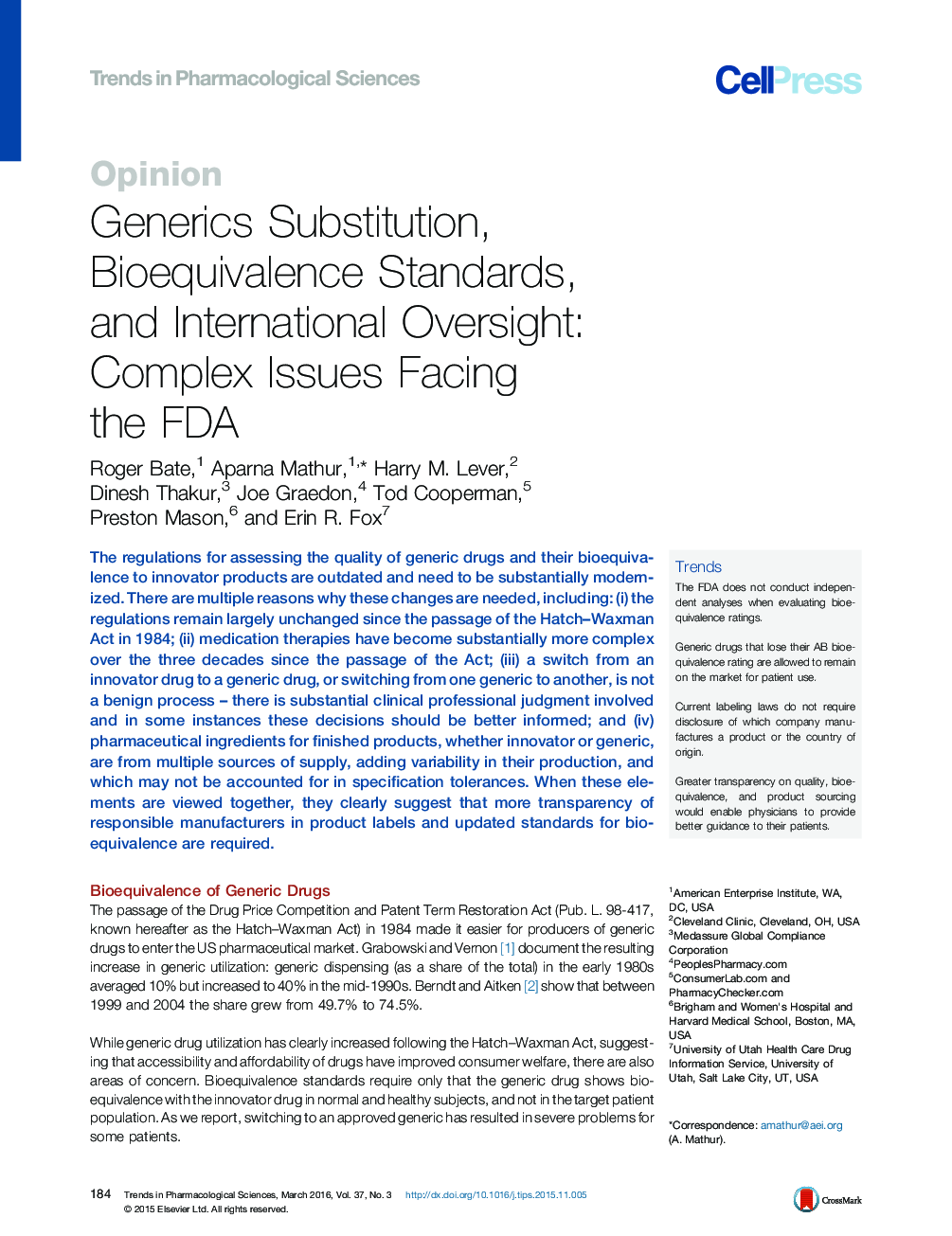| Article ID | Journal | Published Year | Pages | File Type |
|---|---|---|---|---|
| 2572491 | Trends in Pharmacological Sciences | 2016 | 8 Pages |
The regulations for assessing the quality of generic drugs and their bioequivalence to innovator products are outdated and need to be substantially modernized. There are multiple reasons why these changes are needed, including: (i) the regulations remain largely unchanged since the passage of the Hatch–Waxman Act in 1984; (ii) medication therapies have become substantially more complex over the three decades since the passage of the Act; (iii) a switch from an innovator drug to a generic drug, or switching from one generic to another, is not a benign process – there is substantial clinical professional judgment involved and in some instances these decisions should be better informed; and (iv) pharmaceutical ingredients for finished products, whether innovator or generic, are from multiple sources of supply, adding variability in their production, and which may not be accounted for in specification tolerances. When these elements are viewed together, they clearly suggest that more transparency of responsible manufacturers in product labels and updated standards for bioequivalence are required.
TrendsThe FDA does not conduct independent analyses when evaluating bioequivalence ratings.Generic drugs that lose their AB bioequivalence rating are allowed to remain on the market for patient use.Current labeling laws do not require disclosure of which company manufactures a product or the country of origin.Greater transparency on quality, bioequivalence, and product sourcing would enable physicians to provide better guidance to their patients.
